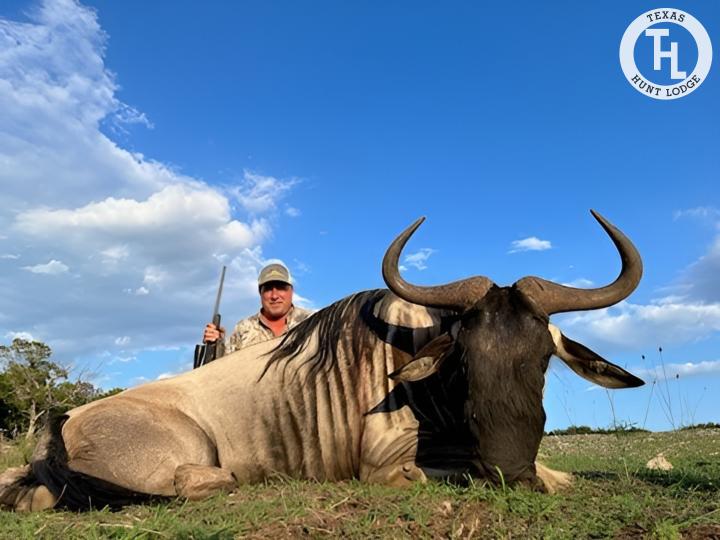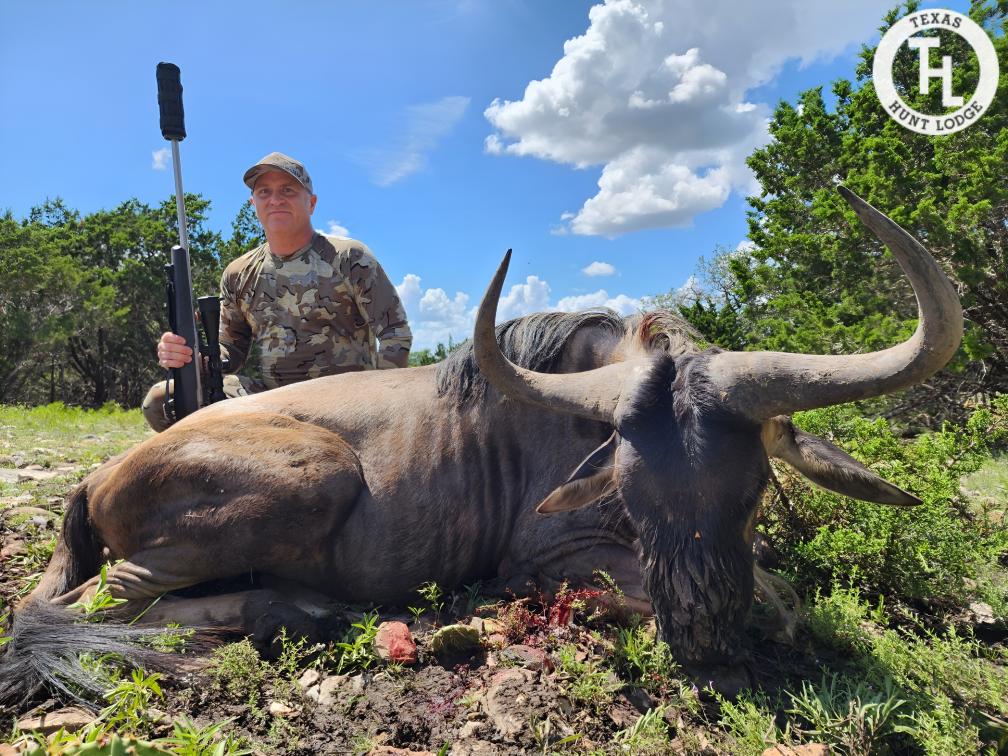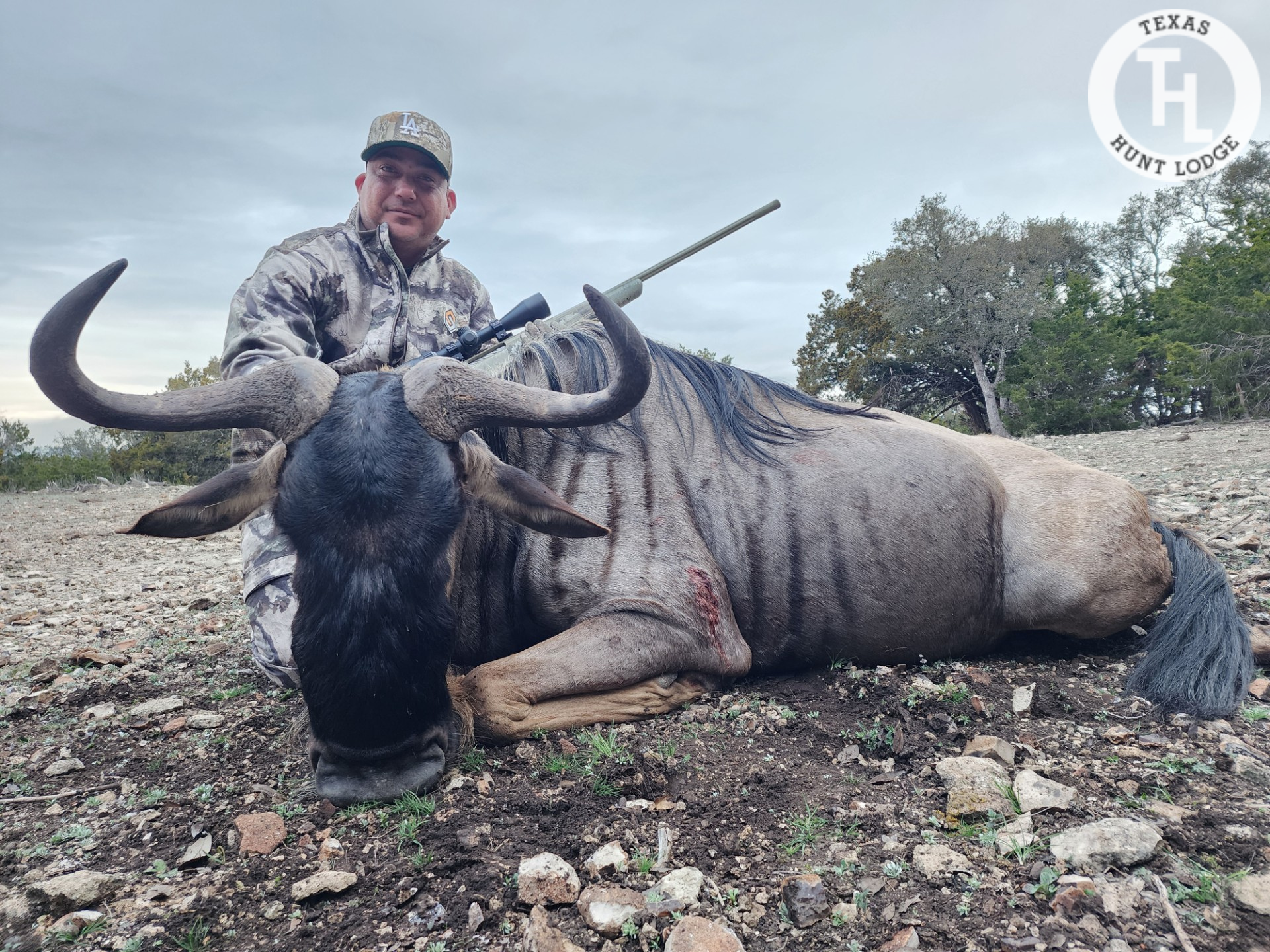Blue Wildebeest Hunting
Blue Wildebeest Hunting Details
Blue Wildebeest Hunt Deposit
Blue Wildebeest Trophy Fee

Texas Hunt Lodge allows the opportunity to hunt and harvest the Trophy Blue Wildebeest you’ll want to hang on your wall. Year-round, we offer hunts for awesome Trophy Blue Wildebeest. There are no seasonal restrictions on hunting the Blue Wildebeest in Texas, which makes it a suitable trophy year-round.
We typically let our hunters choose the method of hunting Trophy Blue Wildebeest that they prefer. Hunters of Trophy Blue Wildebeest can choose the Spot and Stalk method, Bow Hunting, Rifle Hunting, Black Powder, Safari Style Hunting, Handgun, as well as hunting from a Blind. We can accommodate hunters of any age and experience level, as well as hunters who have physical disabilities or may be confined to a wheelchair. Bring your binoculars and scope for an optimal experience!
Originating from the grasslands of Southern and Eastern Africa, the Blue Wildebeest has become a popular game species in Texas. Introduced for hunting purposes, the Blue Wildebeest offers a thrilling hunt and a magnificent trophy. At Texas Hunt Lodge, we only hunt large Trophy Blue Wildebeest with large Boss and have taken multiple World Record Class Blue Wildebeest over the years. This unique wildlife expedition allows you to experience the savannah and bush terrains, often tracking and spotting the animals in their natural-like habitat.
Every hunting expedition includes a knowledgeable guide who will help you navigate the terrain and teach you about the conservation efforts to protect these magnificent animals. You might even encounter bulls and gnus during your adventure. The thrill of tracking these animals, combined with the challenge of their natural camouflage, makes for an unforgettable experience.
Pricing
Blue Wildebeest Trophy Fee
Trophy Fee is in addition to $395 per day which covers All-Inclusive Hunt Package.
Non-hunting guests may accompany the hunter for an additional $200 per day which
covers lodging, meals and amenities as well.
The Blue Wildebeest (Connochaetes taurinus) is one of two species of the Wildebeest, an ungulate mammal of the Bovid Family. From southern and east Africa, the Blue Wildebeest range the open plains and woodlands. The largest population of Blue Wildebeest in the world is in Serengeti numbering over 1 million.
The Blue Wildebeest were once widespread in South Africa north of the Orange and Vaal Rivers; however, they were shot out by early European settlers except for relic populations in northwestern Cape Province and northern and eastern Transvaal, and game reserves in northern Natal. But today they are widely re-established on private ranches in all parts of South Africa and Texas, so the extent of their distribution (not their population) exceeds what existed before Europeans arrived.
The Blue Wildebeest has a very muscular heavy shoulder and abdomen with a distinct muzzle. The Blue Wildebeest has slender legs, but the most distinguished characteristic of this animal are the large bovine-like horns extending outward then up and inward. In a male Blue wildebeest, the horns can span over 90 centimeters, while the female’s horns mass is about half the size of the male. The other difference between male and female wildebeest horns is that the males have a Boss which connects their horns on top of their head.
The Blue Wildebeest are born light brown and take on their adult coloration after 2-3 months of age. The adult color of a Blue Wildebeest is actually a bluish-gray; light gray, or grayish-brown. They have long thick manes which appear jet black.
Large herds of Blue wildebeest numbering in the thousands can be seen in Tanzania and Zambia in their annual migration, a spectacle that showcases the importance of conservation.



